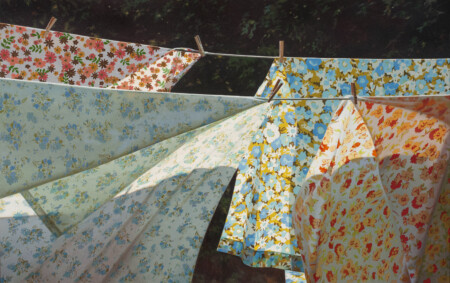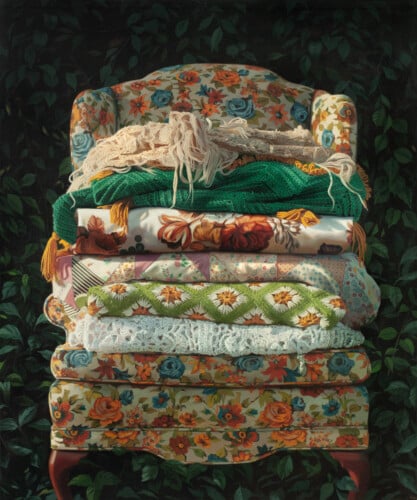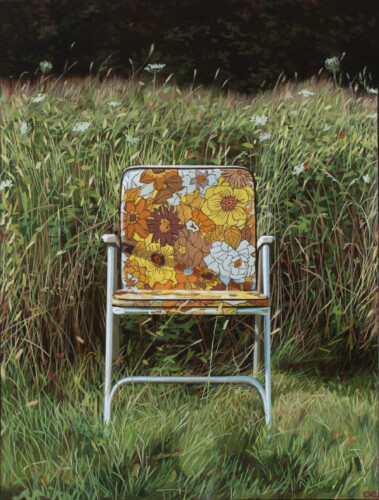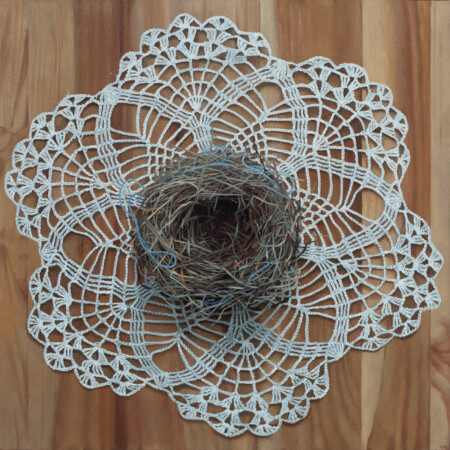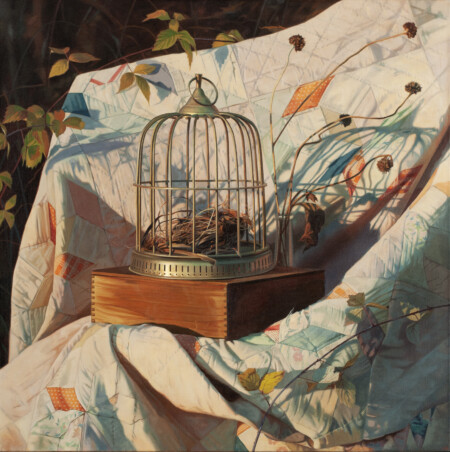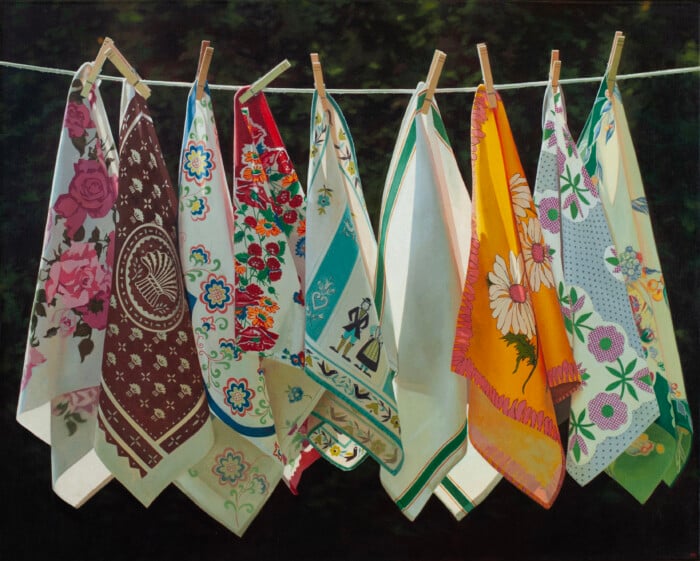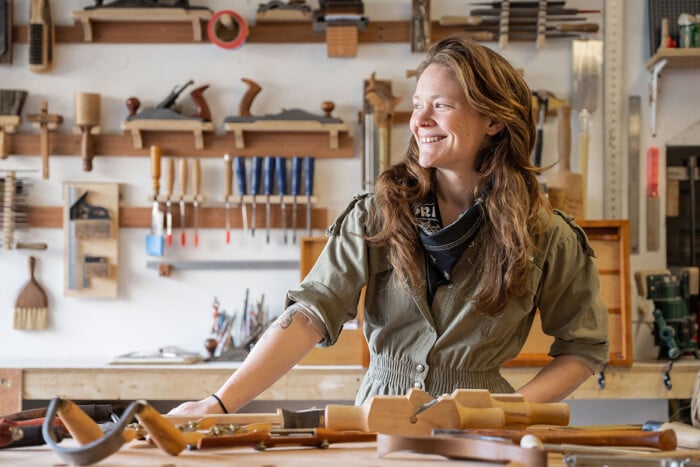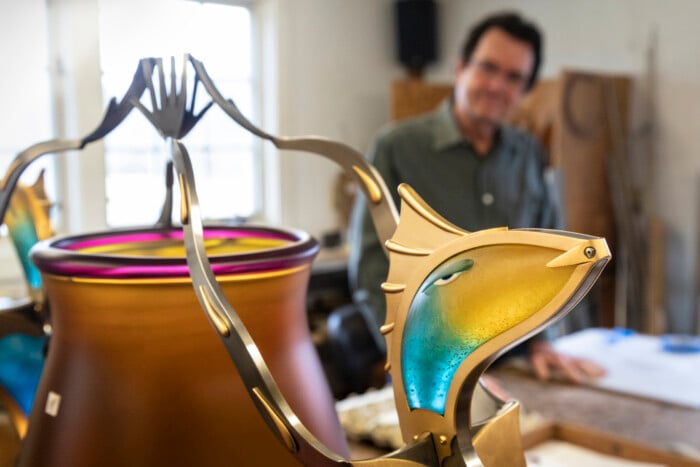A Brush With Nostalgia
Artist Cindy Rizza is reawakening American realism with poetic, nostalgic still lifes.
The magic happens in an unassuming field at a friend’s farm in Southern New Hampshire.
Cindy Rizza pulls up in a pickup truck filled with chairs and a pile of blankets sourced from thrift stores or eBay. “I probably look a little crazy out there with the bugs, trying to create a composition with a background or mood that I like,” says the 40-year-old artist with a laugh.
She photographs her compositions — fabrics on an antique chair, sundresses hanging on a clothesline, a 1970s-era folding chair — to capture the light. Her preference is for a bold light source (having spent her school-age years in Maine, she notes Andrew Wyeth as a strong influence).
“I might take 200 photos in a day, and maybe I’ll get one painting out of it — it’s very hit or miss,” she admits. The next step in her creative process is to reassemble the objects in her studio, a quiet space above the garage in the Goffstown home she shares with her husband and two daughters.
Her paintings are typically life sized. Depending on the subject matter, they range from eight inches to four feet. They are realistic, with incredible detail (a large blanket stack painting takes on average about 150 hours, sometimes more). However, they fall short of hyper- or photorealism. “If you view my work up close, you can still see the brush strokes,” she says.
Rizza enjoys mixing patterns and textures and welcomes the challenge of capturing stitches and fuzz and shadowed folds. “I’m at that place in my career where I can figure out how to paint
something methodically, step by step. After thousands and thousands of hours of trial and error, I can confidently say that I’ve put in the time,” contends the artist, who received her BFA from the New Hampshire Institute of Art.
In choosing her subject matter, she is driven by her eye for nostalgia and by examining the comforts of home. Instead of the more typical vase of flowers or bowl of fruit, she opts for more domestic finds like antique chairs, dressers, china, afghans, quilts, doilies and tablecloths.
And while a handmade quilt or a vintage tablecloth presents as a warm, positive visual, Rizza points out that,
depending on the viewer’s perspective, her paintings can evoke sadness, discomfort and vulnerability in equal measure. Nostalgia triggers thoughts about the passage of time, redundancy, bygone
eras and lost loved ones.

Domestic (24” x 24”, oil on linen) exemplifies Rizza’s exploration of the home as both sanctuary and boundary.
Placing these objects in a field, flanked by grasses, adds yet another layer of thematic complexity. As Rizza writes in her artist statement: “When juxtaposed with natural settings outside of their native interior habitats, these heirlooms transcend their functions to become identities in themselves, creating order and beauty in an unmanageable world.”
Her genius is that she uses time-worn materials to generate a contemporary and fresh body of still-life work. Not surprisingly, the international art world is taking notice. Just this past summer, Rizza showcased 24 works at a solo exhibition at Galerie Mokum in Amsterdam. She is also represented by George Billis Gallery in New York City.
She tends to work seasonally to give her creative self time to recharge. But her need to explore new ways of rendering still life pulses constantly through her mind. Rizza is happiest in that meadow, her collected objects in tow, ready for that next painting.


